Schlumbergera lutea subsp. bradei
Description:
Phylloclades flattened, 1.5 cm long and 1 cm wide, narrower than subsp. lutea, club-shaped. Flowers broadly funnel form, brilliant yellow, possibly self-sterile (data not yet sufficient).
Fruits spherical, greenish, angled.
Flowering period in northern hemisphere: March to May.
First description:
Campos-Porto, P. & Castellanos, A. (1941): Rodriguesia 5: 354, tab. 4, 5 (as Hariota epiphylloides var. bradei).
(click to enlarge)
Origin of the name:
epiphylloides refers to the Epiphyllum-like habitus.
lutea (lat.) = yellow, refers to the yellow flowers.
bradei honors the botanist Alexander Curt Brade (1881–1971), who also worked at the Jardim Botânico do Rio de Janeiro.
Occurence:
Brazil (Rio do Janeiro), in areas above 800 m elevation.
(click to enlarge)
Synonyms:
- Hariota epiphylloides bradei Campos-Porto & Castellanos (1941)
- Pseudozygocactus epiphylloides bradei (Porto & Werdermann) Backeberg (1941)
- Hatiora epiphylloides bradei (Campos-Porto & Castellanos) P. V. Heath (1982)
- Hariota epiphylloides bradei (Campos-Porto & Castellanos) P. V. Heath (1992)
- Hatiora epiphylloides bradei (Campos-Porto & Castellanos) Barthlott & N. P. Taylor (1995)
- Rhipsalis epiphylloides bradei (Campos-Porto & Castellanos) Kimnach (1996)
- Pseudozygocactus epiphylloides bradei (Campos-Porto & Werdermann) Doweld (2002)
- Pseudozygocactus bradei (Campos-Porto & Werdermann) Guiggi (2019)
Photos:
(click to enlarge)
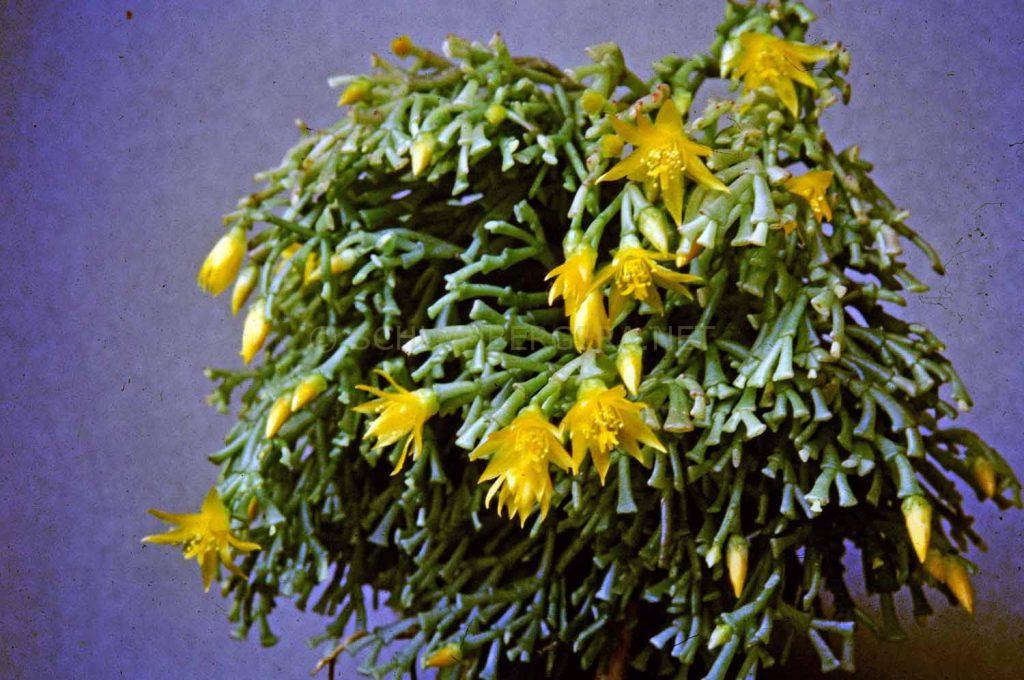
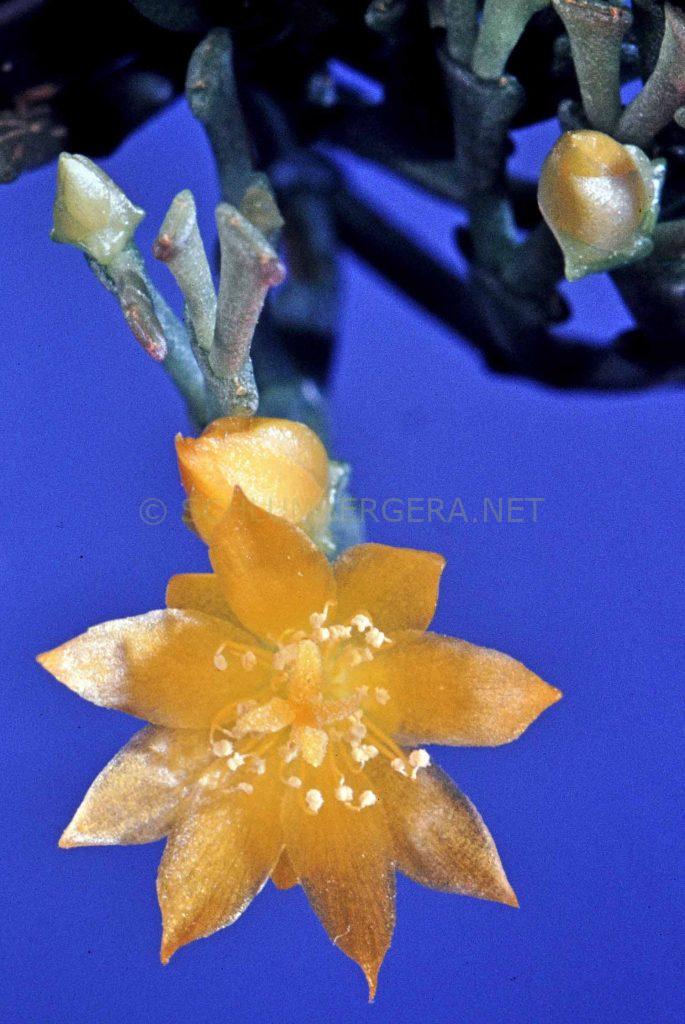
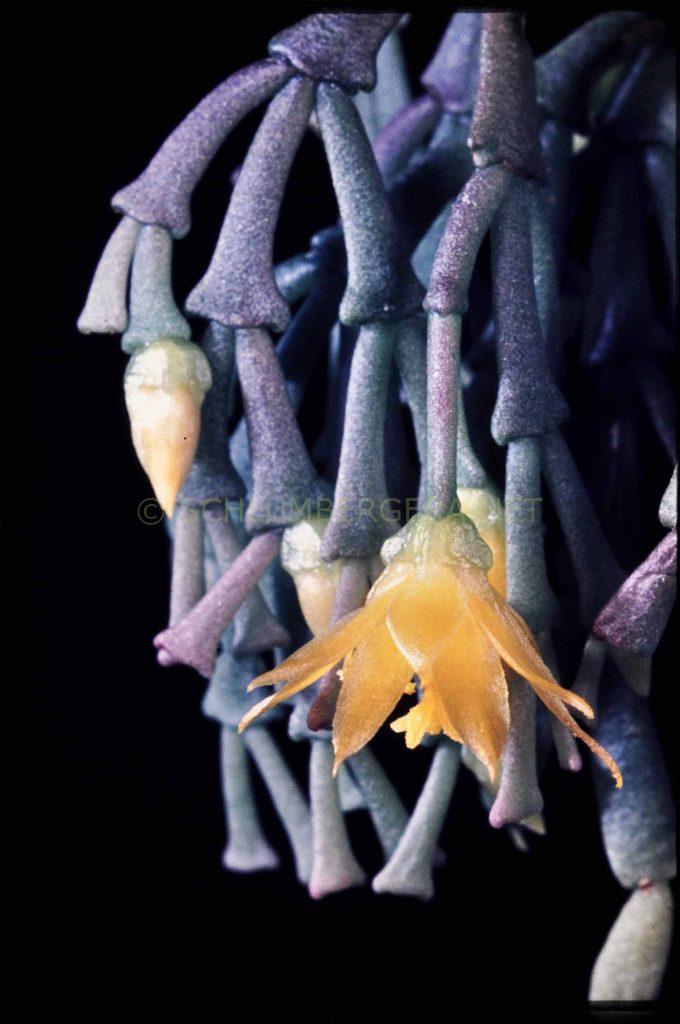
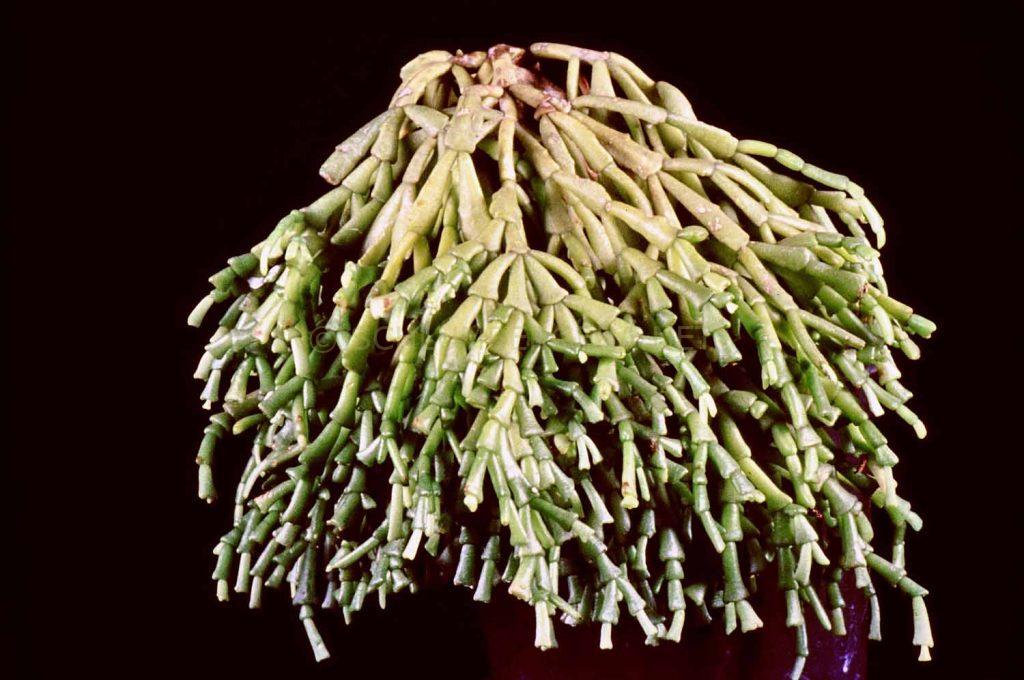
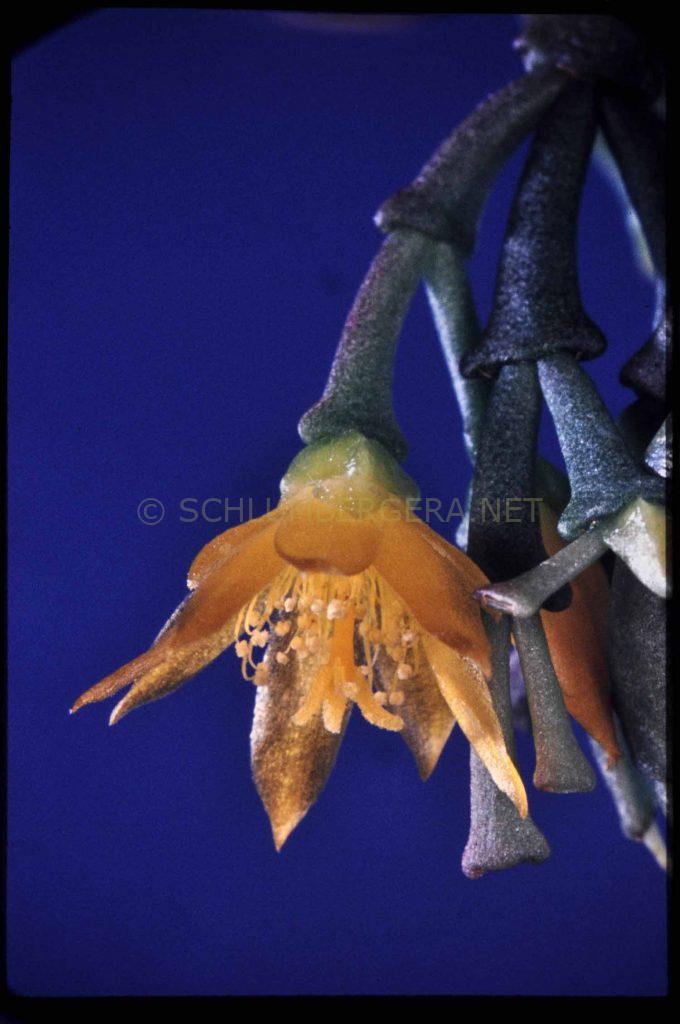
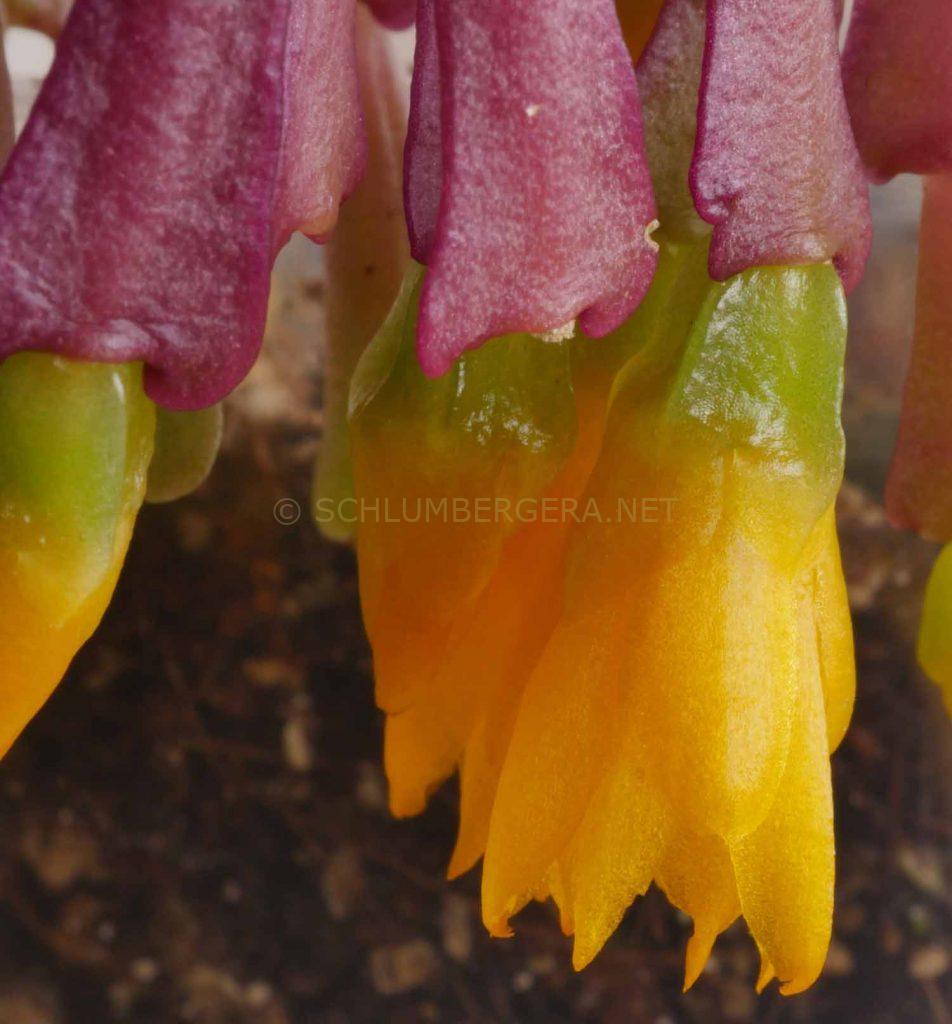

Schlumbergera lutea subsp. bradei AH 803
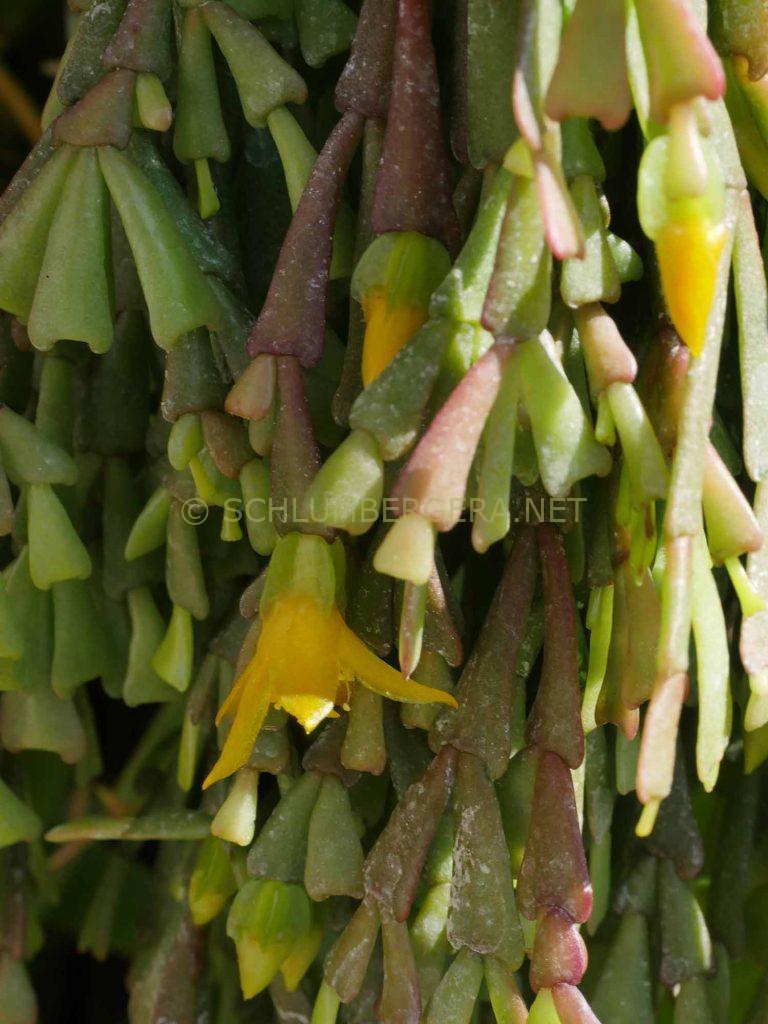
Schlumbergera lutea subsp. bradei ‘Bonn’

Schlumbergera lutea subsp. bradei ‘Mottram Clone’
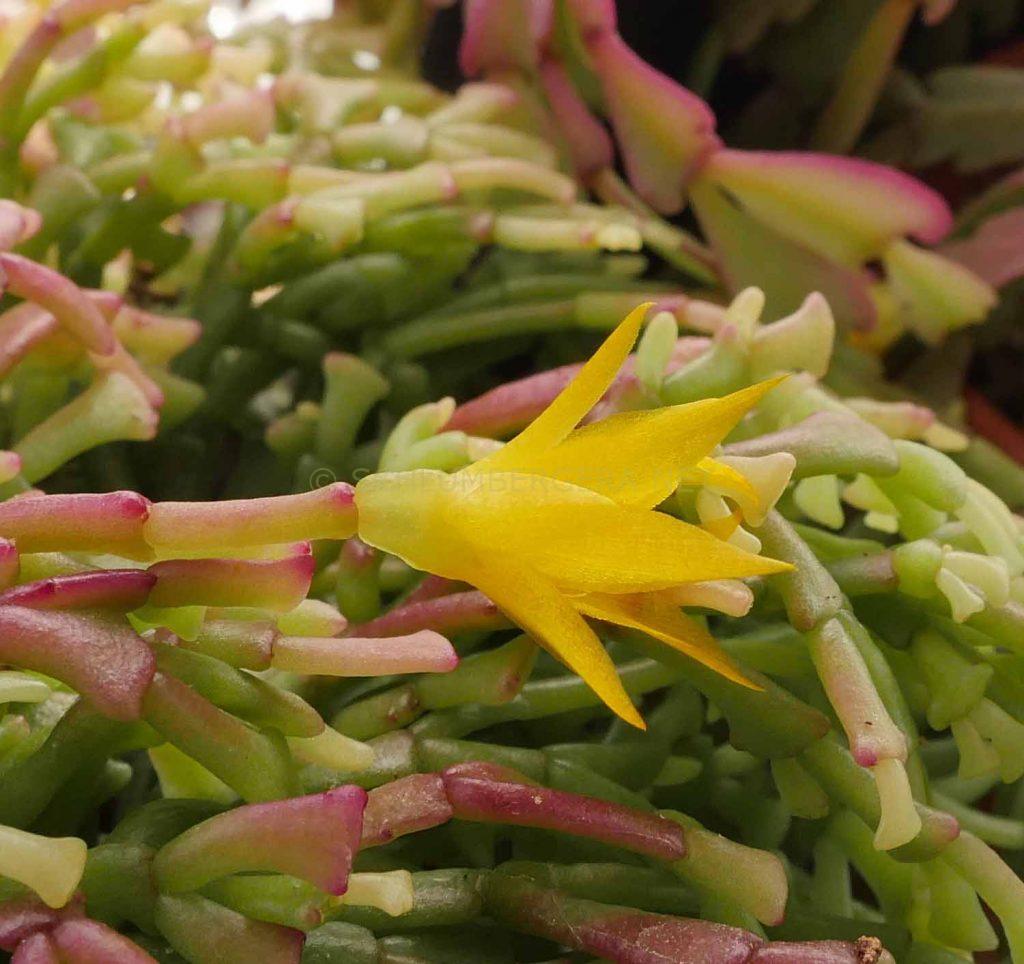
Schlumbergera lutea subsp. bradei ‘Mottram Clone’
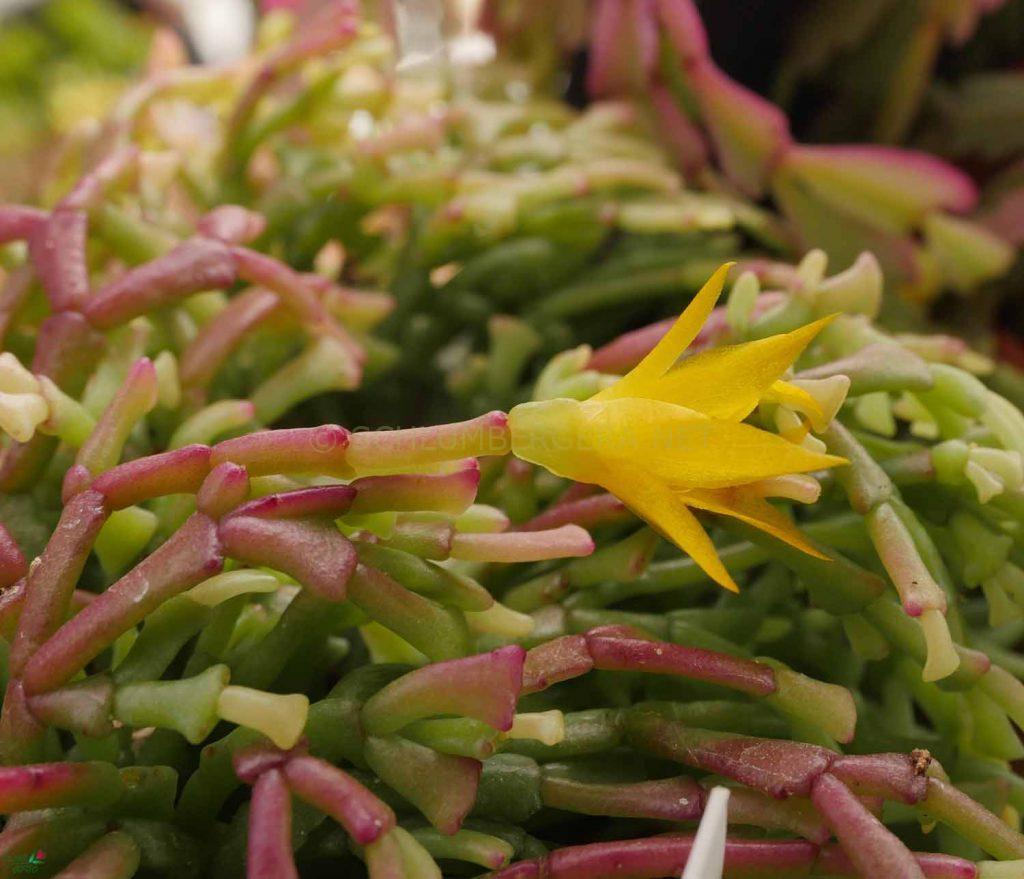
Schlumbergera lutea subsp. bradei ‘Mottram Clone’

Schlumbergera lutea subsp. bradei (Countess Orssich c. 1972)
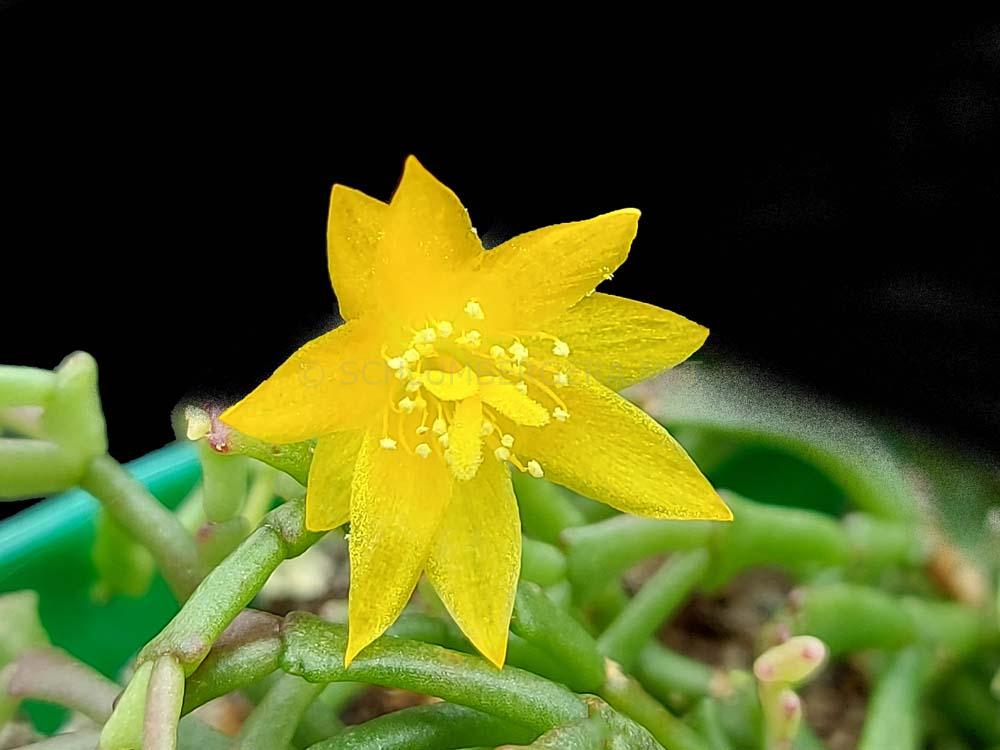
Schlumbergera lutea subsp. bradei (Countess Orssich c. 1972)
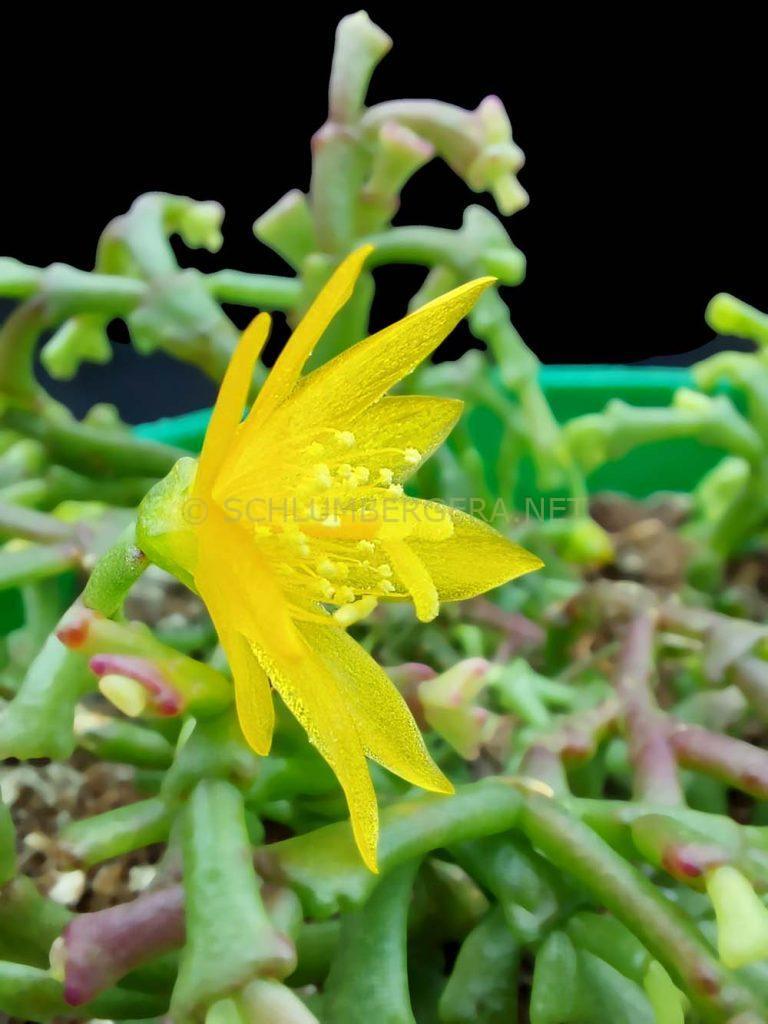
Schlumbergera lutea subsp. bradei (Countess Orssich c. 1972)




